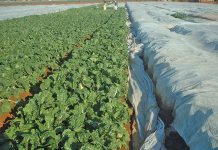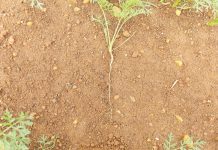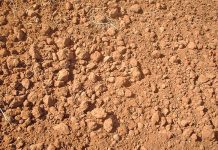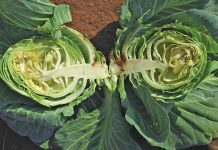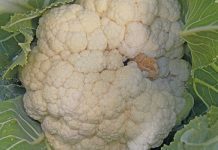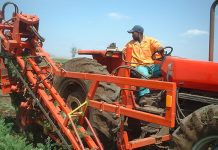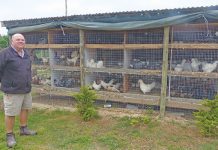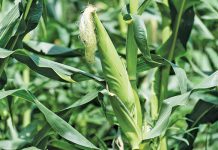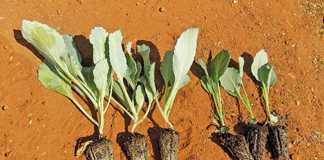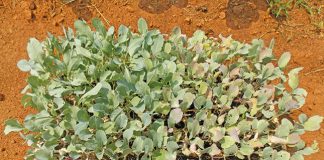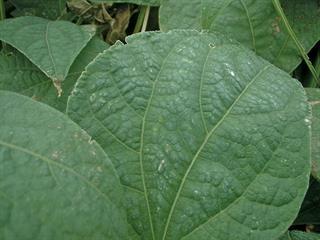
Clearly, farmers using drip irrigation have an advantage when water is in short supply. But they can face problems with a heat-sensitive crop when it’s this hot and dry. The reason is that overhead irrigation is also required for its cooling effect, and a heat wave is often accompanied by strong, dry wind.
This combination makes for inefficient water use when irrigating during the day because a high percentage of the water evaporates before reaching the soil. This means you’re wetting less deeply than you think you are, and are wasting water at a time of scarcity.
Night irrigation
The better option under these conditions is night irrigation. This allows all of the water to enter the soil. It’s certainly worth
the effort of getting up to open and turn off the water! Some crops are not well-suited to a high temperature and your irrigation management must be adjusted to bring the temperature down. Potatoes are a good example: they prefer cooler conditions and have relatively shallow root systems.
Lighter irrigation at more frequent intervals is called for, and night irrigation can help too. The moist soil will have a cooling effect
as it evaporates even when the sprinklers are not working. For water efficiency, we can irrigate carrots for a prolonged period. This allows the moisture to soak down to a substantial depth, encouraging the roots to grow deeper. Then you need irrigate only when the crop starts showing signs of stress. When the roots are at a fair depth, leave the sprinklers running the whole night; this moisture will last for weeks while you use your available water on shallow-rooted crops.
Mineral cccumulation
There is another consequence of daytime irrigation with sprinklers under hot, dry conditions. Most vegetable farmers use borehole water, which usually has a fair mineral content. With the high evaporation rate and lack of rain, these minerals accumulate on the leaf surface. The result can be seen clearly when this water lands on the windscreen of a car; it forms a white deposit when it dries on the glass. When irrigation is repeated, it’s easy to imagine how much eventually accumulates.
The reason for adding a buffer to the water in your pesticide spray tanks is to negate the effect that the mineral content and resultant higher pH have on the efficacy of the pesticide. You may feel confident that the product will be effective, only to find that the pests are not controlled on account of the high mineral content on the surface of the leaves. Eventually, the rains arrive, the pests abruptly disappear and the problem is forgotten amidst the many other activities of farming.
A farmer’s experience
I once visited a farmer who had a land of cabbage with one half under flood irrigation and the other half under sprinklers. He had planted a single cabbage variety and followed the same spray programme for both halves of the land.
The sprinkler section was virtually unmarketable due to caterpillar damage, whereas the flooded area was perfectly clean. This dramatic contrast opened my eyes to the ‘mineral problem’.
I am open to any suggestion on how to remove this mineral layer from leaves. But until a suitable product is developed to do this, the only solution is to use a sprayer that will wet the underside of the leaves where there is no mineral accumulation.
Night irrigation will also help to reduce the accumulation.

